Monk fruit is a relatively new natural sweetener that has recently become a real hit in the culinary world. However, before we look at monk fruit, let's get to know the plant involved in its production.
Siraitia grosvenorii is a plant from the Cucurbitaceae family, distributed in Southern China and Northern Thailand. The plant gained popularity for its fruit, called Monk fruit, luo han guo, arhat fruit and Buddha fruit, from which the harmless monk fruit sugar substitute is produced.
The leaves of Siraitia grosvenorii are green, narrow and heart-shaped. They reach a length of 10-20 cm. The fruit of the plant is oval, resembling a melon. It reaches 5-7 cm in diameter and has a green-brown or yellow-green color. The skin of the fruit is slightly grooved, relatively not thick and covered with hairs. Monk fruit has elongated and almost spherical seeds.
History of Monk Fruit
It is believed that in the thirteenth century Chinese monks first used the fruit of Siraitia grosvenorii, which is why it got the name Monk fruit. In 1938, the fruit was rediscovered by Prof. G.V. Grof. He wrote a report on it, stating that its sweet juice was used as the main ingredient of refreshing drinks. At the beginning of the twentieth century, the fruit was taken to the United States, where it began to be studied, after which it was included in the composition of some sugar substitutes.
Although unknown to much of the world, sweeteners produced from the fruit of Siraitia grosvenorii are already widely used in a number of countries. In the 1990s, Procter & Gamble patented a process for the extraction of mogroside V and signed a contract with Amax NutraSource to distribute monk fruit. In the USA, the product Fruit-Sweetnes of the New Zealand company BioVittoria has been approved for several years, which is about 150 times sweeter than sugar and has been successfully applied mainly in drinks.
In 2011, the British company Tate&Lyle entered into an agreement with the New Zealanders for exclusive global marketing and distribution and thus Purefruit was born, also produced by Monk fruit. According to the company, Purefruit's most successful applications are in dairy products and soft drinks, followed by frozen desserts, baby juices, nutritional supplements, candy and more.
Monk fruit composition
As already mentioned, monk fruit sweetener is obtained from the juice of Monk fruit. The fruit themselves contain fructose, glucose, vitamin C, saponins, etc. The sweetener has an exceptional sweetness that can reach up to 250 times that of sugar. It is due to the chemical compounds mogrosides and especially mogroside V (Esgoside).
Monk fruit production
Monk fruit production is a long process that goes through several stages. However, in order to harvest the fruit, from which the sweetener is produced, the plants must first be planted. The germination rate of the seeds is low and sometimes it takes even months for a plant to appear.
Siraitia grosvenorii is mainly grown in China's distant Gunasi province, mostly in the mountains near the city of Guilin. These places are shady and plants can thrive there undisturbed by the sun.
When the fruit begin to ripen (they do not have to be fully ripe) they are collected and stored in special dry rooms. After that, the already ripe fruit begin to be processed. They are cleaned from the shell and seeds, after which the flesh of the fruit is crushed.
The resulting fruit concentrates and purees are used in the further production of monk fruit, removing the excess specific aroma in a special way. Sugar, molasses, sugar alcohol, etc. are usually added to the sweetener.
Monk Fruit Benefits
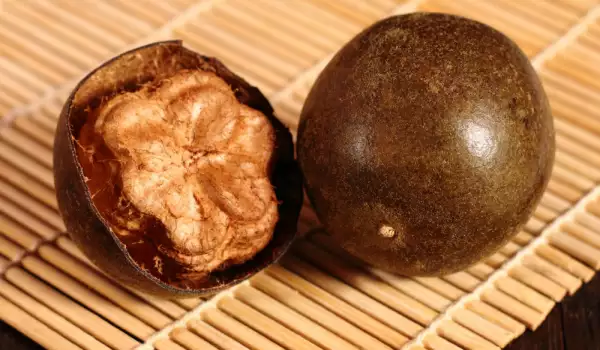
The benefits of monk fruit are not few. The fruit themselves, from which the natural sweetener is produced, have been used for centuries in Chinese folk medicine. They help with cough, sore throat, cold, high fever, etc. In China, there is a belief that people who eat these fruit live very long.
In areas where Siraitia grosvenorii is grown, the number of centenarians is extremely high. Scientists explain this phenomenon with the fact that the locals have the opportunity to eat Monk fruit in its fresh form.
The exotic fruit are also traditionally consumed dried, they are added in soups and herbal teas. Medicinal hot drinks are also prepared from the dried bitter peel of Monk fruit.
Otherwise, monk fruit sweetener dissolves and combines well with its biggest natural competitor - stevia. Sweetening foods and drinks with Monk is considered safe. Monk can easily be used as a substitute for sugar by people suffering from diabetes, and it is certainly preferable to saccharin, aspartame and cyclamate, which have recently been cited as causes of cancer.
US Food and Drug Administration (Food and Drug Administration, FDA) has already approved monk as a safe sweetener and it is expected to become more and more common on the market.
There are opinions that when using monk, a slightly bitter and specific aftertaste is felt, but they are not confirmed by absolutely all users, which means that there is no guarantee whether a person will like the sweetener or not.
Monk in cooking
This sugar substitute is suitable for anyone who is trying to get rid of extra weight, but cannot imagine life without something sweet, as it is low in calories. Monk is successfully used in making all kinds of cookies, biscuits, cakes, pastries and all sorts of other sweets. Great for sweetening juices, teas, cocktails, etc.
Tikvenik with monk
Necessary products: filo pastry sheets - 500 g, pumpkin - 500 g, monk fruit - 2/3 cup, walnuts - 100-150 g, oil - 100 ml, breadcrumbs - 30 g, cinnamon - 2 tbsp. packet, powdered sugar - 3 tbsp.
Method of preparation: Wash the pumpkin and grate it. Then stew it for a while in 2-3 tbsp. oil. Grind the walnuts and add them to the pumpkin. Add monk, cinnamon and breadcrumbs and mix everything well. Then grab a filo pastry sheet and spread a small part of the filling on it. Roll the sheet carefully and place it in an greased pan.
Proceed in the same way with the rest of the sheets, by arranging them in the tray in the shape of a spiral. Spread fat on top and place the tikvenik in a preheated oven at 220°C. When the pastry is baked, you can brush it on top with a little water to soften the crust. Finally, sprinkle with powdered sugar.
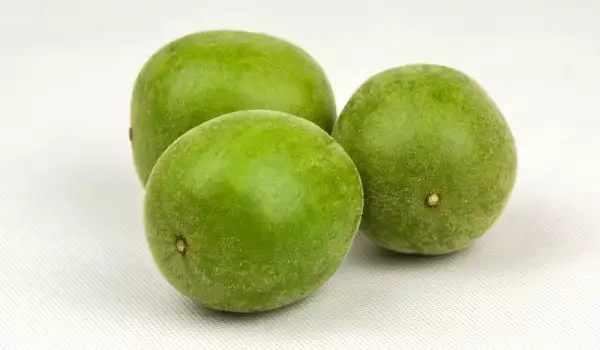







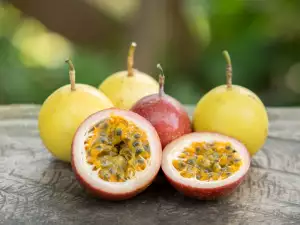

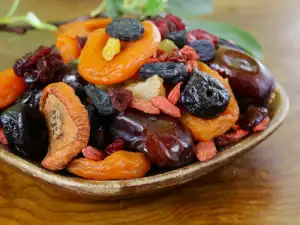
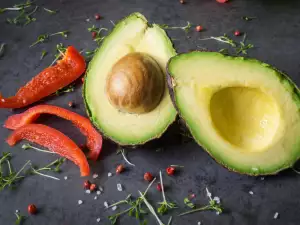








Comments